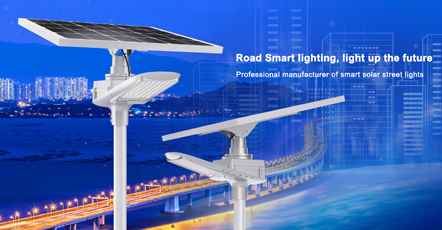
Knowledge
Solar Street Light Outlook Nowadays, solar street lights have become the lighting sources being mostly used for outdoor lighting. Solar energy is the solar street lights’ primary energy source. Solar panels, which always placed on the integrated poles, power the street lights. Since the demand for continuous power and lighting has increased both in urban and rural areas, the development prospect for the solar street lighting market has drastically expanded. Some aspects, for instance, technological innovations in terms of the street lighting design, has brought about a reduction in the components of street lighting; hence, making them an appealing alternative to traditional street lights. The global solar street lighting market size is valued at $5.7 billion with sales of 1,545.9 thousand lighting units in 2019 and projected to witness a CAGR of 9.4% during the forecast period (2020-2030). The declining price of solar street lighting solutions and increasing number of smart cities are the major growth driving factors. Besides, increasing urbanization in developing regions is creating ample opportunities for the solar street lighting industry to grow. Aside from the aforementioned factors, the growing number of smart cities is also contributing to the soaring sales of solar street lighting systems around the world. Over the last few years, there has been a significant increase in the construction of smart cities in countries such as the United States, India, China, and South Korea, and this trend is expected to continue in the near future. Furthermore, many countries' governments are making large investments in the development of smart cities, which is also increasing sales of solar street lights. According to the research, the highway and roadway category held the largest solar street lighting market share in 2019, owing to wide application of lighting products in highways and roadways. The category is further expected to grow fastest in the market during the forecast period. This can be ascribed to increasing government focus toward high-class infrastructure developments, which is further pushing the demand for outdoor lighting. During the historical period (2014-2019), Asia-Pacific region held the largest share in the global solar street lighting industry, due to increasing infrastructure projects and government initiatives in China, India, Japan, Australia, and South Korea for the deployment of solar lighting systems. According to the International Energy Agency (IEA), China was the largest market in the APAC region in 2019 for the implementation of solar lighting system solutions and accounted for 42.8% share in total global solar photovoltaic (PV) capacity. The APAC region is also expected to maintain its dominance in terms of market share in the industry during the forecast period. Factors that affect solar street lighting market’s size Awareness Consumer education is among the top factors facing solar street lights’ penetration into the market. It is important to consider raising the level of awareness of the target market through stating the available options, their benefits, together with the hazards associated with the use of more dangerous sources of energies to light people’s homes. If consumers get appropriate awareness, it becomes easier for more people to trust solar street lighting products; thus, increasing the size and forecast of the solar street lighting market. Enabling Environment This is assumed to be the prevalent conditions in the areas or countries supporting the growth of the solar energy industry. The enabling environment is all about the roles of the national governments, and those of regulatory bodies. The business model viability of a nation can be gauged using national policies. Affordability to Finance Affordability affects the penetration of the solar street lighting market in most parts of the world. Limited financing alternatives can be felt on different distribution value chain levels, from the manufacturers to dealers, distributors, importers, and even users. The fact that there is no detailed information regarding the solar lighting industry, foreign direct investors have been facing a serious impediment. Thus, it is easy to conclude from the preceding paragraphs that demand for solar street lighting devices will increase globally in the coming years, owing primarily to rising construction of buildings and infrastructure modernization and renovation projects, increased construction of smart cities, and extensive development of roadways, railway lines, and airports in many countries. The solar street lighting industry will absolutely develop well in the future.View Detail
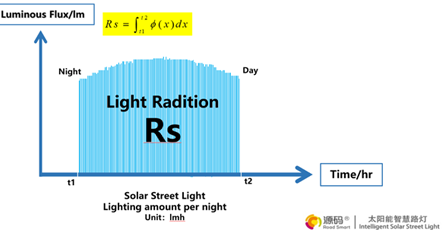
Knowledge
How to determine the brightness of solar street light? -RS standards In recent years, with the deterioration of the global environment, solar energy resources have received more and more attention. For this reason, many countries are increasing the layout of solar energy resources. As LED technology is advancing with each passing day, its luminous efficiency is making an amazing breakthrough. So how do we judge the brightness of solar street light? In the market, due to the lack of understanding of the technology of the solar street light industry, users only roughly understand some simple mainstream configurations in the market, such as: how many watts are required for solar panels, how much capacity is required for batteries, and how many lamp beads are required. So you can only judge the brightness of the lamp with these parameters which are not so practical. This has actually fallen into a misunderstanding. These parameters are only superficial, and we need to understand the real needs of users. What is the purpose of a user buying a lamp? What is the original performance of the lamp? After all, their destinations fall on "lighting". Users buy lamps for lighting, and the original performance of lamps is also lighting. Based on this, Road Smart thought deeply and got the answer. Users are not buying parameters, configuration or power, but light. Only the total amount of light and the quality of light actually emitted by solar street lights are our initial requirements for solar street lights. After understanding this demand, we need to understand some industry-related knowledge first Industry knowledge How to judge the light source? 1. Average life: The average life of a light source refers to the time it takes for 50% of the light sources to fail after multiple light sources are turned on at the same time. 2. Strobe: The number of times the light source flashes per second. Failure to provide a stable voltage will cause a large strobe. A light source with a large strobe will cause the most damage to the eyes. 3. Luminous flux: For a lamp, the simplest explanation is the amount of light emitted, the unit is lumens (LM). 4. Luminous efficiency: The luminous efficiency of the lamp is how much light can be emitted per unit power, the unit is LM / W. 5. Rendering index: The degree to which the light source restores the color of the object. Generally speaking, the response of sunlight to the color of objects is the best and the most realistic, so their color rendering is defined as 100, and a color rendering index ≥70 is a good light source. 6. Color temperature: The color temperature of the light source is different, the light color is also different. Light with a low color temperature is yellowish, we call it warm tones, and yellow light has good haze permeability; light with a high color temperature is whiter, and white with high color temperature is used for road lighting. It has intermediate visual effects, good visibility, and brighter than yellow light. How to choose a light source? After knowing the relevant industrial knowledge, we need to know how to choose the light source. Here are some references for high-power LED light sources. 1. Efficient use of light. Using lamps with patented lenses to improve the utilization of light. 2. Integrated design. The integrated design makes the LED directly connect with the shell, and the heat is radiated through the shell cooling wings and air convection, which fully guarantees the service life of the LED street light. 3. Using street lights with uniform illumination can solve the problems of concentrated light beams and obvious dark spots. So that the illuminated area is larger and the illumination is more uniform. 4. No glare & no strobe. Eliminates visual fatigue and disturbance of sight caused by glare of normal street lights to improve driving safety; 5. Green and environment friendly. Doesn’t contain pollution elements and cause no pollution to the environment; After knowing the principle of light emission, we need to determine the needs. [Determine requirements] The purpose of users buying lamps: lighting. Brightness of illumination: luminous flux Customer's Ultimate Need: Luminous Flux 【Analysis】 At present, the solar LED street light market is chaotic. Many users and suppliers stay on the previous configuration and power, but with the advancement of technology, we need to redefine light sources. We can clearly find that 10 years ago, the countrysides used 100W light bulbs illuminated the room. Later, we used 30W-40W energy-saving lamps to illuminate the room. And finally developed to LED light sources. A 5W -15W LED light can illuminate the entire room, even brighter. Light bulbs of different powers provide the same brightness, but light bulbs with lower power are brighter and more energy efficient. What is the reason? Let's compare the following data: Luminous flux (LM) = Power (W) x Luminous Efficiency (LM) Power (W) Luminous Efficiency (LM/W) Luminous flux (LM) 20 120 2400 20 150 3000 The same power, different light effects, different brightness The higher the light effect, the brighter. Conclusion The brightness of a lamp cannot be simply measured by power, but by the luminous flux. Regardless of power, brightness, configuration, etc., it will eventually return to how much light it emits. Only the light that this lamp really emits is our ultimate demand. According to this demand, Road Smart pioneered the RS standard, which judges and tests the light by the total amount of light radiation and the quality of light The development of the industry requires standards, and with standards, the industry can develop in a standardized way. In the future, the Road Smart will continue to work hard to lead the solar lighting industry to intelligent and standardized development and promote the clean and green development of global energy.View Detail
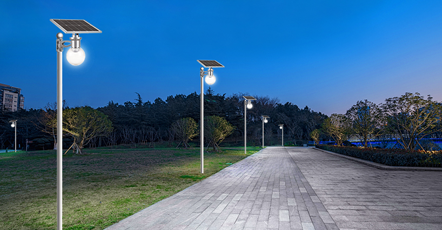
Knowledge
The Characteristics of Solar Street Light in Parks Solar street lights use solar energy as the power supply to provide road lighting at night. The light-post and battery are design into an integral part with wind resistance and intelligent charging and discharging mode. The investment cost of solar street lights in parks is also relatively small. Once users make a one-off investment, they can be able to use the solar street light for a quite long period. Besides, the cost of one-off investment is lower than that of AC power. The solar street light system refers to an independent distributed power supply system. It is not restricted by geographical area, not affected by the installation site. Besides, when installing the solar street light, there is no need to excavate the road for wiring and pipe buried construction. On-site construction and installation are very convenient, and it does not require a power transmission and transformation system. It is environmentally friendly and energy-saving, and can bring good comprehensive economic benefits. It is very convenient to add solar street lights to the roads which have been built. There are many garden lights in parks. The unique secondary optical design of the LED street lamp holder makes the light of LED street lamp holder light up the area that needs light, and further improves the illumination efficiency to achieve the purpose of energy saving. The LED light source efficiency is currently up to 90-110LM/W. Theoretically this value is supposed to be 250lm/W. The overall luminous efficiency of the LED street lamp holder is higher than that of the high-pressure sodium lamp. The light color rendering of LED street lamp holder is much higher than that of high pressure sodium lamp. The CRI (color rendering index) of high pressure sodium lamp is only about 23, while the CRI of LED street lamp holder is more than 75. From the perspective of visual psychology, averagely, to achieve the same brightness, illuminance of LED street lamp holder can be reduced by more than 20% than high-pressure sodium lamps. Solar street lights in the park are powered by crystalline silicon solar cells. The maintenance-free valve-controlled sealed batteries store electricity. Ultra-bright LED lamps are used as light sources. Solar street lights in the park are controlled by intelligent charge controllers to replace traditional street lights which are powered by public grid. No need to lay cables, no AC power supply instead of DC power supply and no electricity bills, which are three of the advantages of solar street lights in the park. They are mainly applied to urban roads, residential squares, industrial parks, tourist attractions, park green belts and other places. Solar street light is under the control of the intelligent controller. The solar panel absorbs the solar light and converts it into electricity. During the day, the solar cell modules charge the battery pack, and at night, the battery pack provides power to the LED light source to provide lighting.View Detail

Knowledge
Road Smart IoT Intelligent Solar Street Lighting System Introduction The solar street light intelligent monitoring and control system developed and designed by Road Smart is a system for monitoring various working environments of solar street lights, and controlling and adjusting solar street lights’ working status according to lighting demand.This system effectively extends the service life of solar street light and efficiently uses solar power to achieve the best lighting effect through the combination of core technologies. Road Smart IoT intelligent solar street lighting system is mainly used in urban/countryside main roads or secondary main road lighting. The following are the features and advantages of this system. 1. The Internet of Things remote control technology can realize remote monitoring, read and write solar street light parameters, timely manage the various states of the solar street light, and facilitate after-sales service. The management platform connects solar street lights through communication technology, which shows the light status and parameter settings, and at the same time adjust the brightness and working mode of the lights to realize human-computer intelligent interaction. 2. Adds intelligent cameras to realize high-definition security monitoring. 3. The built-in maximum power tracking algorithm can quickly and accurately track the best operating point of the IV curve. The MPPT tracking efficiency can reach up to 99.9%, which can significantly improve the energy utilization efficiency of the photovoltaic system, which is 15%~30% higher than the traditional PWM charging efficiency. When there is something covering the solar panel such as dust, tree shadows and bird droppings or part of the panel is damaged, the IV curve will have multiple peaks. However, the traditional single-peak MPPT algorithm cannot track accurately the maximum power point. Road Smart controller adopts multi-peak tracking technology, which can still accurately track the maximum power point and improve the conversion efficiency of solar panels. 4. Intelligent Charge and Discharge Management Technology Road Smart selects and uses A-grade lithium iron phosphate battery which has a stable electrochemical performance and excellent safety performance. The charge and discharge cycle are more than 2,000 times.At the same time, it adopts Road Smart's original intelligent balance and intelligent dual (software and hardware) protection technology. After 2000 cycles of charging and discharging, the battery capacity remains at 90%, which makes the battery more stable and extends the service life. It is 4 times longer than that of lead-acid batteries. 5. Intelligent Efficiency Control 5.0 Technology Based on AI, DL for chip and first-line data that are collected, sorted and analyzed in the past 10 years, Road Smart researches and develops highly precise and refined 5.0 version intelligent efficiency control technology. AI could intelligently judge the recent weather conditions, and then reasonably plan the discharge efficiency which make the solar light works longer in the cloudy and rainy days. 6. Intelligent Temperature Control Technology Road Smart independently researches and develops the intelligent temperature control technology and adds temperature protection function to the battery and controller, which automatically adjusts the charging and discharging parameters to avoid high and low temperature damage to the battery. In the regions that are too hot or too cold, this technology can significantly extend the service life of storage battery.View Detail

Knowledge
How to waterproof the LED Solar Street Light? Nowadays, LED solar street lights are applied to a wide range of areas around the world. They are popular because of their environmentally-friendly and cost-saving features. As they are installed outdoors, they are always exposed to wind, rain and even snow. Moisture and Humidity knows very well to find its way and seep into the interiors of LED solar street light thereby causing significant damage. Therefore, it is important to waterproof the LED solar street light and ensure that they performs well in waterproof function. IP Rating Actually, we will notice the parameter “IP Rating” in the technical specification of solar street light. IP Rating (Ingress Protection Rating) is the rating used to classify the different levels of sealing effectiveness provided by an electrical enclosure against foreign bodies such as objects, water, dirt, etc. It gives you a clearer picture of how water resistant the item is, compared to vague marketing terms such as “waterproof”. For enclosures, the typical waterproof IP ratings are IP67, IP66, and IP65 enclosures. So what do these ratings mean? IP65: Able to protect against water jets. Water projected by a nozzle (6.3 mm) against enclosure from any direction shall have no harmful effects. IP66: Able to protect against powerful water jets. Water projected in powerful jets (12.5 mm nozzle) against the enclosure from any direction shall have no harmful effects. IP67: Able to protect against Immersion up to 1 m. Ingress of water in harmful quantity shall not be possible when the enclosure is immersed in water under defined conditions of pressure and time (up to 1 m of submersion). Customers can choose the solar powered waterproof lights according to their demands. When it comes to waterproofing, we need to pay attention to the following aspects. The Battery The battery is the core part of LED solar street light. Its main function is to store electricity generated by solar panels and to supply it to the lighting system. The battery of the solar street light is buried in the ground so as to avoid being flooded. Although it is said that the outer layer of the battery has been dealed with waterproof measures, it needs to be covered with cement around to further strengthen the waterproof measures. The Solar Charge Controller Besides, we need to pay attention to the solar charge controller for they are quite significant to the LED solar street light. During the day, the controller converts solar energy into electricity, and at night the battery provides electricity to the street lights. Most of the controllers are installed in the lampshade and battery box. Generally, the water will not enter, but we need to be careful. During the installation, we’d better bend and fix the internal connecting wires of the controller terminals into a "U" shape. The outside connecting wires are also needed to be fixed to a "U" shape, so that rainwater cannot enter and result in short-circuit. The Lamp Holder The waterproofing of LED lights is very simple, just need to make a simple lampshade like ordinary electric lights to waterproof it. The sealing performance of the lamp cap of the solar street lamp must be high, and the waterproof treatment of the lamp cap can ensure the service life of the street lamp. Therefore, the choice of the street lamp shell is siginificant, the waterproof grade can be IP65 or IP66. The Wiring System Last but not least, we are supposed to check the waterproof function of the wiring system. Check whether there is poor contact of joints, water seepage or tape falling off and work out the problems as soon as possible. The amount of rainwater in summer is quite great. Although the rainwater does not enter the light pole in most circumstances, but the condensation of water vapor will also lead to a short circuit. We hope that the above information on how to waterproof LED solar street lights will help you. Before the installing and using of LED solar street lights, the owners should pay attention to the waterproof measures for each parts of the LED solar street lights.View Detail
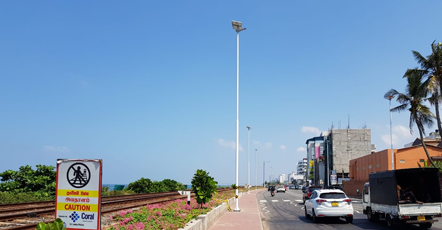
Knowledge
How to change the solar storage battery of solar street light? If the solar storage battery in the solar street light is broken, what should you do? The commonly used method is to directly dig out the gel battery and replace it with a battery of the same capacity. This method also has its disadvantage that the cost is too high. First of all, the price of the gel battery itself is relatively high. Take a 6-meter solar street light as an example, the capacity of gel battery is at least 90AH. Before maintaining the battery, you should first clean the dust on the surface of the battery, and remove the rust on the terminals. Remove the battery cover, you can see the rubber vent valve of the battery. Carefully remove the vent valve, save it, and observe the internal condition of the battery. Add electrolyte containing 0.1%-0.5% sulfuric acid to the battery until there is flowing electrolyte on the battery. At the same time, check whether there are black impurities. If there are obvious black and turbid impurities, it means that the positive plate of the battery has been obviously softened. That is to say, it is hard to repair the battery. To replace the solar street light storage battery, first disassemble the casing and remove it in accordance with the screws of the solar street light. The removed screws must be carefully placed. After opening the casing, you can find the battery, disassemble the battery to see its specifications, and choose a new battery of the same specification. Install the new battery and then turn on the power supply to see if the solar street lights lights can run normally, and if so, remount the casing. The service life of solar street light storage battery will not only be affected by external maintenance, but also closely related to internal heat accumulation. If the solar storage battery is overcharged, the internal temperature of the battery will gradually rise and lead to thermal runaway, which will shorten the service life of storage battery. The following is the repairing method. The battery should be charged with constant voltage and limited current. At the beginning, it should be charged with a current of 0.1c-0.5c until the voltage reaches 16.2V. Keep this voltage value by reducing the current until the charging current drops to 0.03c. Connect the positive and negative outputs of the repair instrument to the positive and negative poles of the battery, turn on the repair instrument, and repair the battery. The first repair process should not be less than 48 hours. Discharge the battery with 0.1c current and record the discharging time. Multiply the discharge current value by discharging time is the capacity of the battery to be repaired.Repair and maintain the solar storage battery of solar street light can extend the service life of solar street light and save the maintenance cost. Related Articles:Solar Lights for Schools and CampusesInspection Method of Intelligent Solar Street Lamp HolderSmart solar street light installation specification Tags: all in one solar street light outdoor smart lighting solar garden lightView Detail
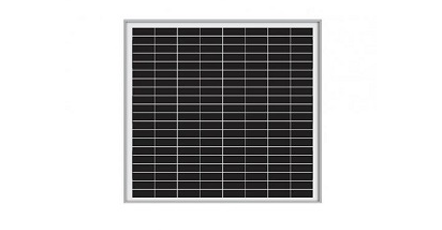
Knowledge
How to design panel angle of solar street light When it comes to solar street light, the inclination angle usually refers to the angle between the solar panel and the horizontal ground. So what’s the best panel angle to maximize the energy efficiency of solar street lamp. Solar panel angle is the most important issue in the installation of solar lights, solar street lights, LED solar garden lights, solar landscape lights, and so on. A rationally designed inclination angle of solar panel can ensure the sun's radiant energy to the maximum extent, and effectively use the solar energy to generate electricity. The inclination angle is generally determined according to the geographical location (latitude, etc.) of the solar street lights' application site, make the front of the solar panel directly facing the sun, then designed the inclination angle with the maximum amount of light received. If conditions permit, the inclination of solar panels should be adjusted accordingly with seasonal changes. In addition, due to the different installation environments of solar street lights, it is necessary to consider the design of shadows and lighting taking. Road Smart solar street lamp adopts high conversion efficiency mono panel and rotating solar panel structure design, which ensures faster solar charge and no worry with bad weather, including cloudy and rainy days.View Detail

Knowledge
Thailand’s solar power market prospects Thailand is close to the equator and belongs to the tropical monsoon climate. It has a natural resource base, long sunshine hours and sufficient sunlight. It is a country rich in solar energy resources. According to relevant statistical data, the average daily sunshine amount reaches 5-6.5kWH per square meter, especially In the northeastern and central regions, the highest regional average is about 1100~1400kWH/m2, and the sunshine hours exceed 1800 hours/year, especially in the northeastern and central regions, which exceed 1850 hours/year. This shows the conditions of Thailand. It is very conducive to the development of solar photovoltaic industry. Thailand's power generation mainly relies on natural gas. In fact, Thailand has been plagued by power shortages recent years. There are two main problems: one is insufficient power supply, and the other is heavy reliance on fossil energy. From the perspective of power supply, Thailand’s own power generation capacity can basically meet domestic demand. However, with economic development, the contradiction between power supply and demand is becoming increasingly prominent. From the perspective of power production structure, natural gas accounts for the largest proportion of Thailand's power generation structure. However, as resources gradually become depleted and import prices increase, the use of other resources must be considered. Therefore, the relevant Thai government launched and promoted solar projects to use photovoltaic power generation to solve the power supply problem. Electricity and lighting are indispensable in our lives. Using solar power and lighting can save a lot of resource consumption and electricity bills. Here RoadSmart recommends solar street lights and solar residential energy storage systems suitable for the Thai market: Solar street light Solar residential energy storage system RoadSmart has more than 150 national and overseas patents and more than 10 software copyrights. It has actively carried out intellectual property assessment and intellectual property risk analysis and early warning work to protect the layout of new products and new technologies in domestic and foreign markets. Combined with the above infos, Thailand takes advantage of solar energy for its own development, the use of solar power generation and lighting has a wider range of applications. It is not only suitable for indoors but also for outdoor use. To build an ecologically friendly home, solar street lights and solar residential energy storage systems are essential, not only It will pollute the air and save you a lot of electricity bills. By storing the electricity converted by solar panels into lithium batteries, RoadSmart has a variety of powers and different street light types to choose from. Solar street lights can be widely installed in urban streets, schools, parking lots, parks, rural roads and other areas. The solar residential energy storage system also has a variety of power options to choose from. According to the actual needs of the family, it can meet the daily electricity consumption of the family and prevent backup power generation during power outages to avoid troubles caused to the family when there is no power. It is a worthwhile investment. Highly profitable project.View Detail
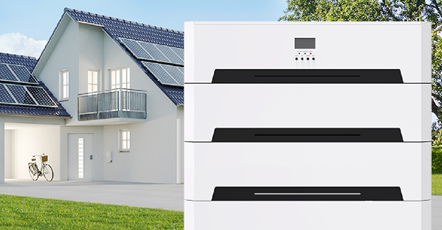
Knowledge
What should you know about solar battery parameters? Solar battery technology is the core of the solar power revolution that is still all the rage today. As battery technology develops, and the demand for renewable energy solutions such as solar increases, the accessibility to solar batteries is only rising. Since the battery is such a critical part of the energy system, it must be chosen carefully. As such, whether you’re already operating with a solar panel system or you’re considering investing in solar, it is essential to be well-aware of your battery storage options. In this article, we will talk about some important parameters to keep in mind while choosing the right batteries for your system. Storage CapacityIt determines for number of hours for which the battery can be discharged at a constant current to a defined cutoff voltage. The value of this capacity depends on the ambient temperature, the age of the battery, and the discharge rate. The higher the discharge rate, the lower the capacity, although it affects each battery technology differently. Additional to the Ampere-hour unit, the storage capacity can also be defined in Watt-hours (Wh=V x Ah), where 1 Wh represents 3600 J. Cycle lifeThe number of charge/discharge cycles a battery has before it is considered to have reached its ‘end of life’. Some battery manufacturers give cycle life as full cycles, while others may count even a partial cycle as one full cycle. Lithium batteries will typically have a cycle life of 4,000-10,000 cycles, while a lead battery might be as low as 1,000 cycles. For lead batteries, cycle life can be extended by designing the system to have a lower depth of discharge. Depth of DischargeIn many types of batteries, the full energy stored in the battery cannot be withdrawn (in other words, the battery cannot be fully discharged) without causing serious, and often irreparable damage to the battery. The Depth of Discharge (DOD) of a battery determines the fraction of power that can be withdrawn from the battery. For example, if the DOD of a battery is given by the manufacturer as 25%, then only 25% of the battery capacity can be used by the load. Nearly all batteries, particularly for renewable energy applications, are rated in terms of their capacity. However, the actual energy that can be extracted from the battery is often (particularly for lead acid batteries) significantly less than the rated capacity. This occurs since, particularly for lead acid batteries, extracting the full battery capacity from the battery dramatically reduced battery lifetime. The depth of discharge (DOD) is the fraction of battery capacity that can be used from the battery and will be specified by the manufacturer. For example, a battery 500 Ah with a DOD of 20% can only provide 500Ah x .2 = 100 Ah. Maximum PowerThe maximum amount of power that a battery can generate at a given time, for a short period (usually 3-30 seconds), in kilowatts (kW). An example of when maximum power might be required is when you switch on a blender or vacuum cleaner, both of which cause a sudden surge before leveling off. Maximum output power may be limited by the capacity of the system’s inverter. Round-Trip EfficiencyDue to internal losses and material degradation, not all the energy supplied to the battery during charging can be recovered during discharge. The amount of energy that can be taken from the battery during the discharging process over the energy supplied determines the round-trip efficiency. This efficiency is sensitive to the charging and discharging currents. At higher currents, thermal losses increase and therefore the efficiency is reduced. The above is the introduction for some important solar battery parameters. Knowing more about these parameters helps you choose the suitable storage battery for your solar energy system.View Detail
